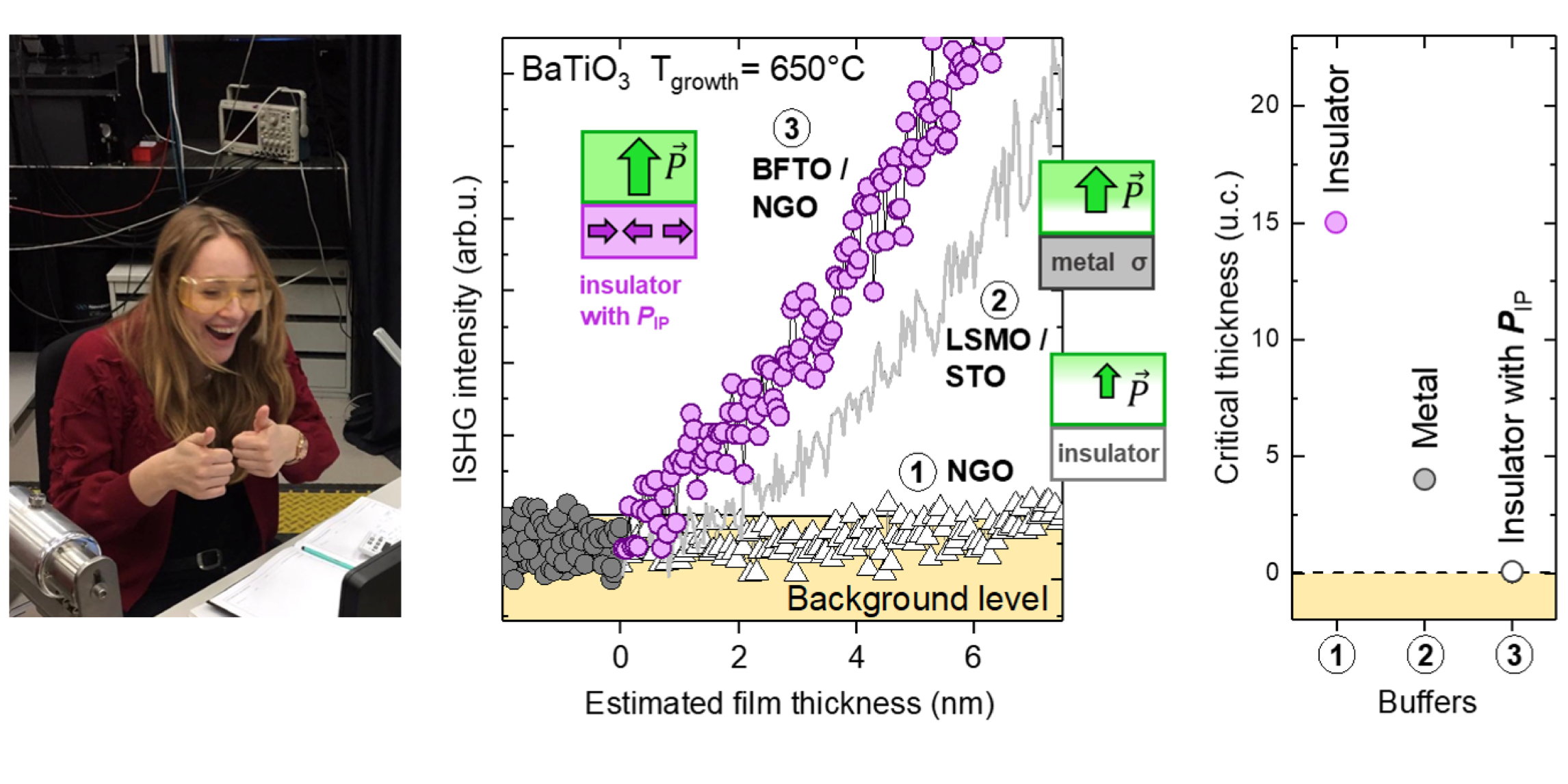Polar Insulators Replacing Metallic Electrodes for the Downsizing of Oxide Electronics
Material surfaces encompass structural and chemical discontinuities that often lead to the loss of the property of interest in so-called dead layers. It is problematic in nanoscale oxide electronics, as it results in a thickness threshold required for the emergence of the materials functionality. An international team, led by Professors M. Trassin and M. Fiebig at D-MATL, reports a groundbreaking achievement: the stabilization of ultrathin ferroelectricity, right from the very first unit cell.

Uncompensated bound charges at the surface of ferroelectric thin films generate a depolarizing field. This field effectively suppresses the functional properties as the film thickness decreases, eventually causing them to vanish entirely, typically below around 5 unit cells in most materials. This critical thickness, necessary for ferroelectricity to manifest, presents a significant obstacle to reducing the size of functional ferroelectric components for use in devices. The usual approach is to deposit ferroelectrics onto metallic electrodes with charge-screening capabilities. However, metals have inherent limitations, primarily a finite screening length, and often fail to fully compensate for the surface charges.
The team of researchers from ETH Zurich, Empa, CEA Grenoble (France), and the University of Connecticut (US) successfully surmounted this challenge through a seemingly counterintuitive strategy. Instead of using standard metallic electrodes, they employed in-plane-polarized ferroelectric layers and engineered artificial flux closure within the heterostructures. Remarkably, by introducing an in-plane-polarized ferroelectric epitaxial buffer, they ensured the continuity of polarization at the interface. Despite its insulating nature, this buffer enabled polarization to emerge right from the very first unit cell in an out-of-plane-polarized ferroelectric BaTiO3.
In multiferroic BiFeO3, the flux-closure approach additionally stabilizes a uniform sense of polarization rotation across all the domain walls. This discovery is accompanied with the observation of an unusual 251° domain wall type in the BiFeO3 films. The observed homochirality is probably associated with the ferroelectric analogue to the Dzyaloshinskii–Moriya interaction. Thus, the researchers conclude that in an adaptively engineered geometry, the depolarizing-field-screening properties of an insulator can even surpass those of a metal and be a source of functionality. This insight holds great promise for advancing the field of oxide electronics into the next generation.
- Elzbieta Gradauskaite, Quintin N. Meier, Natascha Gray, Martin F. Sarott, Tizian Scharsach, Marco Campanini, Thomas Moran, Alexander Vogel, Karla Del Cid-Ledezma, Bryan D. Huey, Marta D. Rossell, Manfred Fiebig, and Morgan Trassin. Defeating depolarizing fields with artificial flux closure in ultrathin ferroelectrics. Nature Materials, external pageDOI:10.1038/s41563-023-01674-2
- Prof. M. Trassin
- Prof. M. Fiebig
- Laboratory for Multifunctional Ferroic Materials
